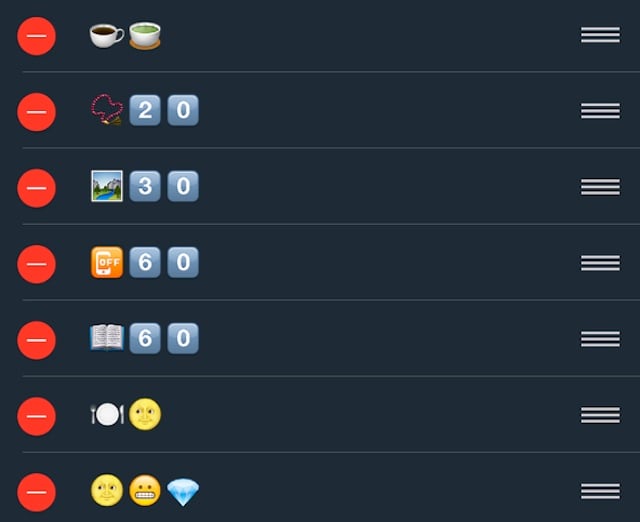Why you should emoji review your sleep

A screenshot of how Taylor Hodge data labels his sleep.
The other day I posted about the trend away from five-star reviews to emoji reviews, and on Twitter reader Taylor Hodge shared his unique method of using emoji to data label his sleeping patterns: “Recently I’ve been using emoji as data labels in @sleepcycle,” he tweeted. Interested in learning more, I interviewed Taylor via email about how he tracks his personal data with emoji.
How old are you, what do you do for a living, and where do you live?
My name is Taylor Hodge, I’m 25 years old, and currently I live in Myrtle Beach, SC (although my plan is to change that in 2016). I’ve spent the past ~5 years working in restaurants and serving tables to support myself, but I harbor a deep, wholehearted fascination with data science and machine learning that I am in the process of pursuing.
What’s Sleep Cycle and why do you use it?
Sleep Cycle is an alarm clock for iOS and Android that tracks your sleep cycles during rest by monitoring your movement and behavior during sleep via sound analysis. This information is then used to optimize your waking time, ensuring that you wake up in your desired time window between the light and REM sleep cycles.
I use Sleep Cycle because it wakes me up more effectively than any other alarm I’ve ever used. (Admittedly, I’ve never tried any “sunrise” alarms like this one, but I’m very interested in doing so.) In my experience, its combination of sleep tracking and alarm windows (with steadily increasing alarm volumes) leaves me energized and rejuvenated after being gently woken, as opposed to being groggy and sleep drunk when being woken up by harsh, shrill, traditional alarm clocks. Sleep Cycle also allows you to use “sleep notes” to label activities and learn how they effect the quality of your sleep. This feedback is incredibly useful and has allowed for actionable changes in my behavior that have drastically improved the quality of my sleep.
Where did you come up with the idea of using emoji for data labeling?
The idea for using emoji for data labeling arose out of my own laziness. After training myself and practicing to become a morning person over the past ~6 months, I wanted a clean slate with Sleep Cycle, so I erased all of my past data, not realizing that all of my previous data labels would be erased as well. When I realized this was the case, I decided that I didn’t want to take the time to type the meticulous labels I was using before, so I thought it’d be neat and efficient to label them using the smallest number of characters possible, so I decided to try emoji.
Can you explain what a couple of the labels in your screen grab mean?
Of course! In the screenshot I tweeted, a few of the labels are as follows:
emoji —> meaning
beer —> Did I drink alcohol today?
coffee/tea —> Did I consume caffeine today?
rosary + 20 —> Did I meditate for ~20 minutes?
valley + 30 —> Did I spend ~30 minutes outside today?
OFF + 60 —> Did I turn off/avoid electronic screens ~60 minutes before bed?
book + 60 —> Did I read for ~60 minutes before bed?
Do you think emoji are a more effective way of labeling data?
Subjectively, for personal data or pet projects, I think emoji for data labeling can be very effective. In this way, you’re able to use a minimal amount of characters in a robust fashion that allows for an unambiguous meaning. However, I think it would be difficult to pass this data on to someone else and have them objectively understand it without explicit explanations of the emoji’s meaning in the label.
What do you think of the trend away from five-star reviews to emoji reviews?
I think using emoji in place of five-star reviews could be effective, depending on the context, constraints, and clarity of how they are used.
For example, a “sick” emoji next to a restaurant review tells about that person’s specific experience in a clear way, one that is arguably more effective than “1 star” with an accompanying paragraph, and definitely more effective than just a lone “1 star” review. But, on the other hand, if I see a review for a dentist that’s labeled with an “Easter Island head” emoji, then I’m even more lost than when I started.





Stay Connected